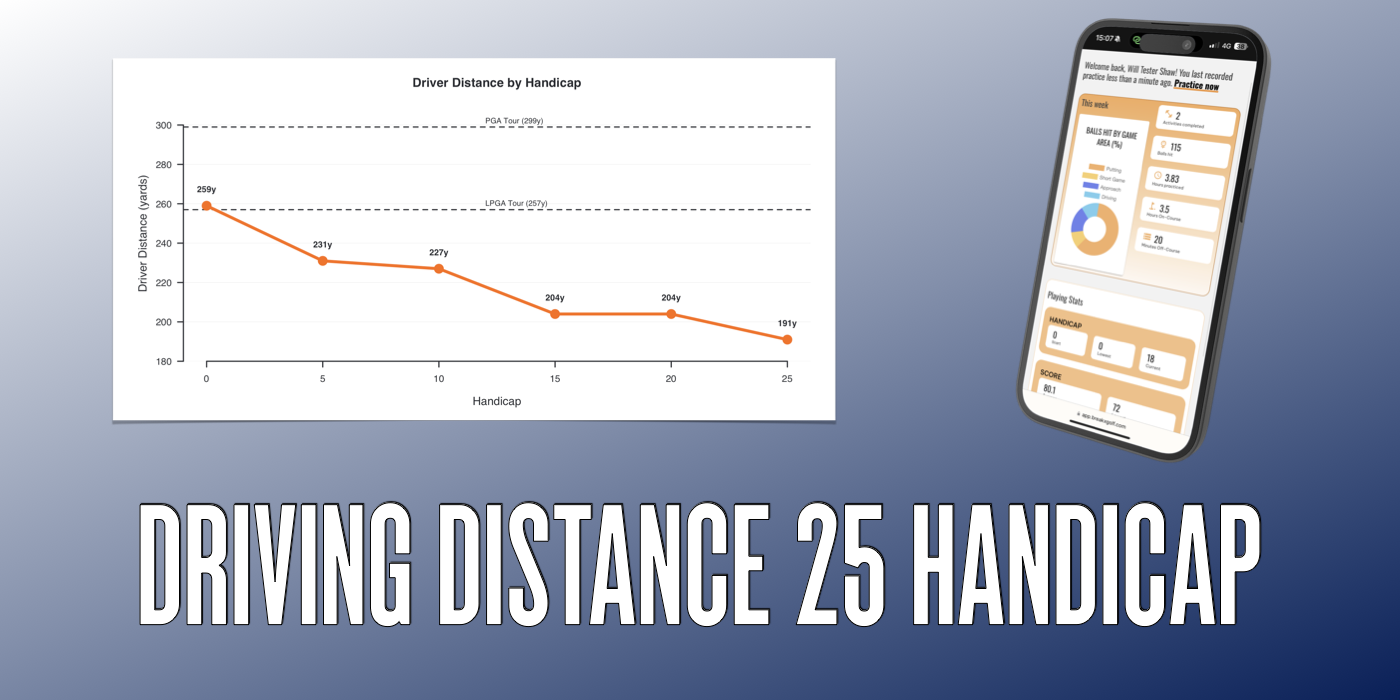Twenty-five handicap golfers average 191 yards off the tee with the driver: 13 yards behind 20 handicappers and 68 yards behind scratch players. With other clubs, 25 handicappers show modest gapping: 148 yards with the 3-wood, 141 with a 5 wood, and 122 with a 4 hybrid. This distance profile makes regulation-length courses challenging, with most par 4s requiring more than two shots to reach greens, and par 5s firmly in three or four-shot territory.
📊 25 Handicap At-a-Glance:
- Average Driver Distance: 191 yards
- Fairway Accuracy: 47%
- Avg Approach Shot Distance: 220 yards
The fairway hit percentage sits at 47%—remarkably, this is actually higher than scratch golfers at 46%. However, it doesn’t take into account how much further scratch golfers hit the ball, or how far off line both groups are when they miss a fairway.
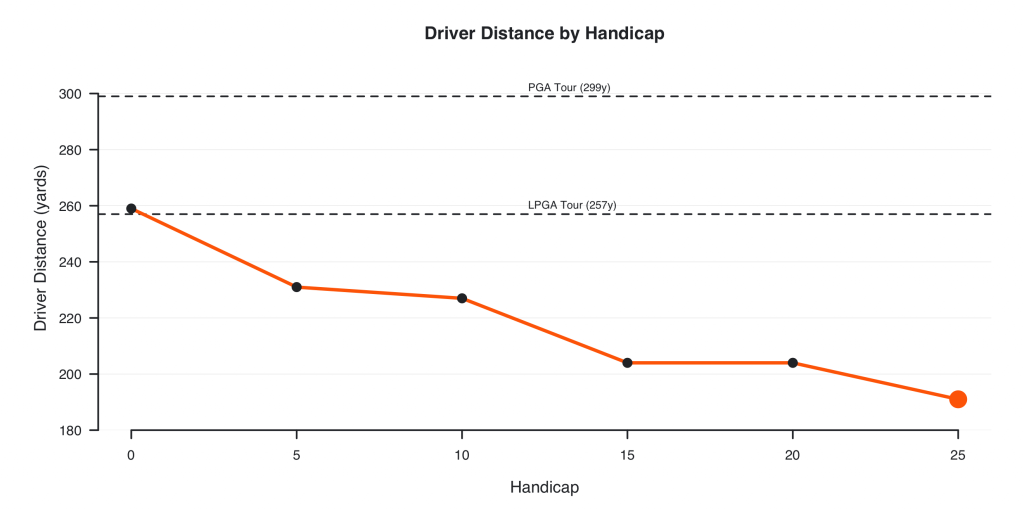
The approach shot distance of 220 yards reveals the real challenge: 25 handicappers are facing long iron or hybrid approach shots as standard, compared to the short irons and wedges that scratch players enjoy from 154 yards. That 66-yard difference on approach shots is the gap between pitch shots and full hybrids—a difference that makes par feel like birdie for elite players.
WHAT THIS MEANS FOR YOUR GAME
Here’s the critical insight that often gets overlooked: fairway percentage doesn’t tell the whole story. 25 handicappers are hitting fairways at 47%—better than scratch golfers, but they lack distance due to a combination of poor strike, club face control and club head speed.
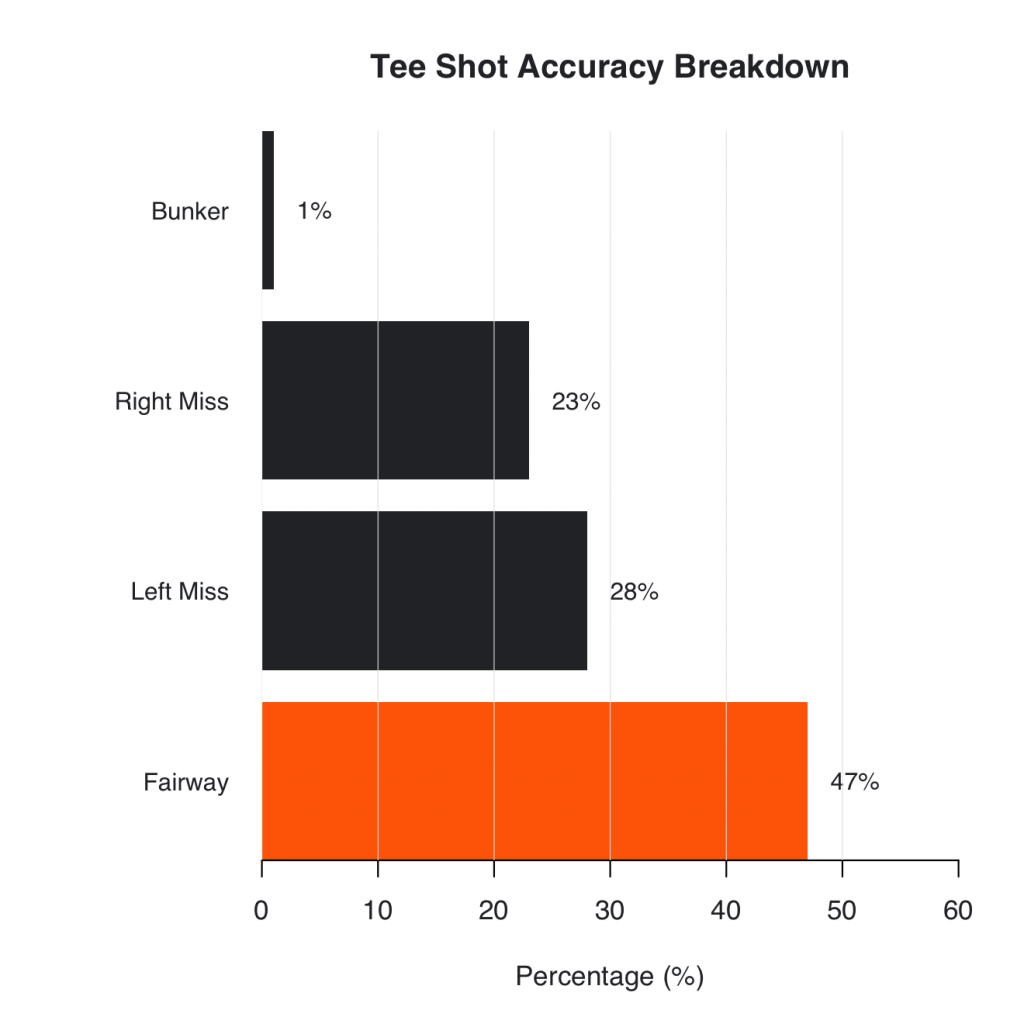
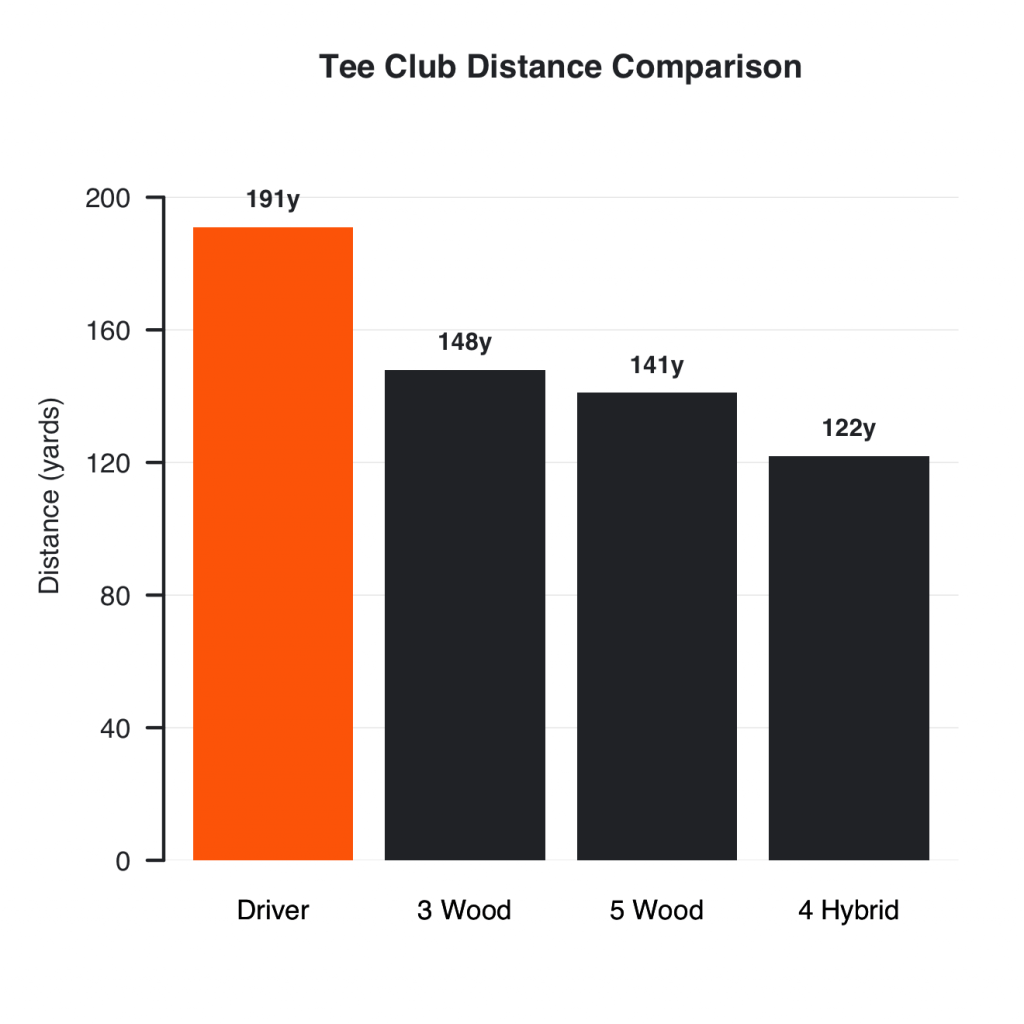
A 25 handicapper hitting 191 yards and missing by 13 yards is 3.9° offline. That’s virtually identical to 20 handicappers at 3.9°. Your angular accuracy off the tee is reasonable; the problem is that you’re giving away 68 yards to scratch players, which translates to multiple clubs difference on approach shots. More critically, those approach shots from 220 yards are coming after drives of just 191 yards—meaning you’re leaving yourself genuinely difficult second shots on most holes.
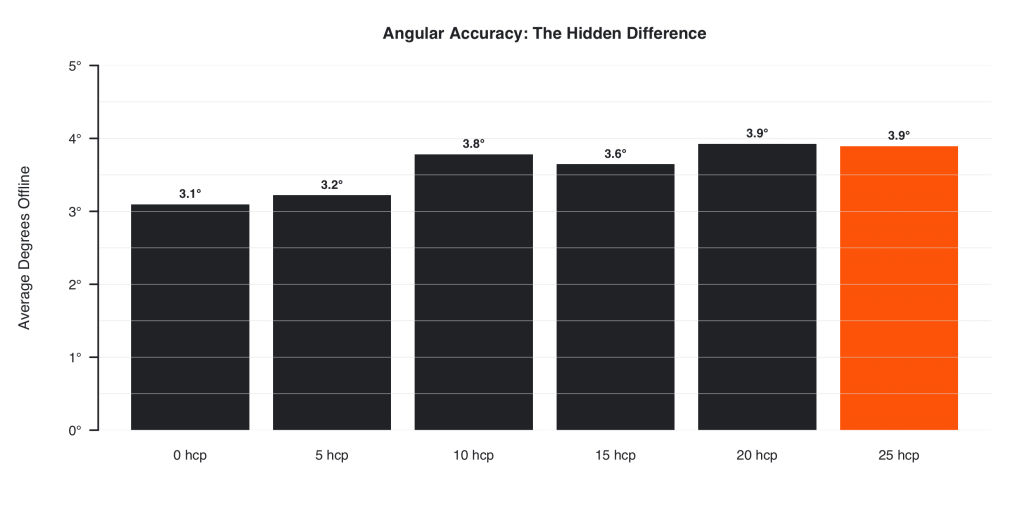
The data shows an interesting pattern in distance by scoring outcome. When 25 handicappers hit longer drives around 181-184 yards, scoring improves. But the overall distance spread is narrow—just 28 yards between best and worst outcomes. This suggests that swing consistency is a bigger issue than any single element like distance or accuracy. The drives that produce birdies or pars aren’t dramatically longer; they’re just slightly better-struck within a generally consistent distance range.
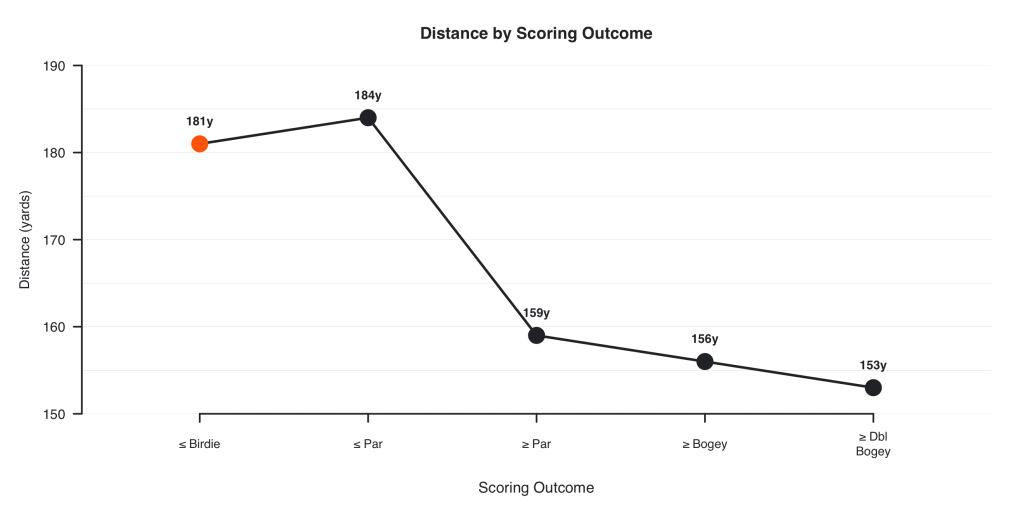
If you’re working toward 20 handicap from 25, the data shows you’re already hitting fairways at the same rate as elite players. The thirteen-yard gap to 20 handicappers will help, but the real improvement will come from everywhere else: consistent ball-striking across all clubs, reducing three-putts, improving short game, and course management.
Focus on building a repeatable, fundamentally sound swing that produces consistent contact. Distance will naturally increase as your swing improves, but chasing yards alone won’t drop your handicap. Better contact, smarter decisions, and sharper short game skills will.
TRACK YOUR STATS VS THESE BENCHMARKS
Knowing where you stand against 25 handicap benchmarks is the first step. Understanding exactly which skills will move you toward your target handicap is step two. Break X Golf uses your actual playing stats to build personalised practice plans that target your biggest scoring opportunities—helping you build consistency across all aspects of your game to reach a 20 handicap and beyond.
